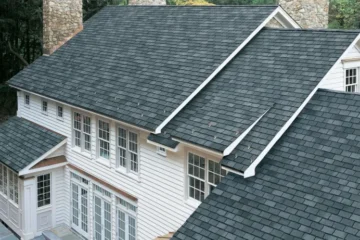Overseeding Bermuda Grass – Best Grass Mixture with Top Tips

Bermuda grass, a warm-season perennial grass, goes dormant in winters and drastically reduces causing trouble for homeowners. Golf courses and sports fields also suffer from thinning of Bermuda turf and need reestablishment.
Overseeding Bermuda grass is the easiest way to bring lawns’ and fields’ beauty back. But, overseeding doesn’t simply involve scattering the seeds and waiting until they germinate. Instead, pre plantation strategy, best grass mixtures, and proper management of Overseeded Bermuda turf minimize the chance of failure. So, don’t go randomly and give your Bermuda turf ideal conditions to establish a healthy turf.
When and How to Overseed Bermuda Grass?
Overseeding Bermuda grass gives the best result if the ground is well-prepared to facilitate Bermuda seed development. This is because thatch, compacted soil, and weeds in the ground can result in seedling diseases, and thin grass stands during early growth stages.
Therefore, prepare a seedbed in spring to early summer when the temperature is about 60oF. It is the peak growing season of Bermuda grass.
Pre-planting Strategy
When the temperature is all set, follow this pre-plantation strategy the same way as the timing of each of these practices is crucial to their success.
Mowing
The first step is light vertical mowing that should begin in midsummer and continue through fall when Bermuda grass growth slows. Frequent vertical mowing helps to reduce thatch in Bermuda turf and smoothens the base to create favorable soil conditions. Here you must not forget that if working on golf greens, mow weekly; and sports fields monthly during this period. Infrequent and severe mowing results in unsightly turf and poor playing surfaces that is not acceptable at all.
Aeration
Aeration is the second most crucial step of seedbed preparation for overseeding Bermuda grass. Late spring and summer are ideal for aerifying the lawns as they alleviate compaction and reduce thatch. Never aerate Overseeded site after September 1 as it promotes germination of weeds such as annual bluegrass. Secondly, seeds do not grow uniformly and emerge in clumps if aeration is done within a month of the plantation. So, consider the time for aeration is mandatory.
Topdressing
Light topdressing also makes Bermuda turf ready for overseeding. Topdressing materials may vary between sites. If you prepare sand-based rootzones, the material should be free of particles larger than 1.0 mm in diameter and contain 10% of sand, silt, or clay. Similarly, organic amendments soften the soil and increase its moisture and nutrient retention.
Disease prevention treatment
Disease control is the last requirement for overseeding Bermuda grass as seedlings are prone to several diseases and fungal infections. A broad-spectrum fungicide should be applied before plantation to reduce populations of soilborne disease organisms that attack seedling grasses. On the other hand, using fungicide-treated seeds is also a great way to minimize seedling diseases like pythium.
Overseeding Bermuda Grass
When the seedbed is perfectly ready for plantation, take an estimation of the field area and calculate seed rate as 1 ½ to 2 pounds Bermuda seeds are required per 1 000 square feet.
You can use a slicer seeder to apply the Bermuda seeds. Spiking in two directions and then broadcasting Bermuda grass seeds uniformly also works well. If little thatch is present despite all efforts, take a slicer seeder to open the thatch and soil surface and plant the seeds in shallow slicer furrows. Don’t bury seeds deeper as they can rot and ruin all preparation efforts. Keep the seeds less than ¼ inches deep for disease-free seed germination and water lightly for several days.
Overseeding Bermuda Grass with Ryegrass
Ryegrass is cool-season grass and proves to be the best option for overseeding Bermuda grass turf for its aesthetic values. Annual and perennial ryegrasses are two main varieties used for overseeding purposes. Both types are reasonably bright in color and give off a vibrant light green shade to the home lawn. Annual ryegrass is slightly lighter in color than perennial and grows in a bunch-like pattern, while perennial type grows in a rolled way.
Annual ryegrass is most suitable for the US Department of Agriculture growing zones 4-9 and should be kept at a mowed height of 1.5 to 2 inches. On the contrary, perennial grass variety grows well in zone 5-7 and should be mowed between 1.5 to 2.5 inches.
Although annual and perennial ryegrass share many common varieties, both give immediate green lawn with seeds germinating between 5-7 days; similarly, both ryegrass varieties decrease weed pressure by competing for soil space. But, the conflict arises for their cost. Annual ryegrass is less expensive than perennial and has an edge of excellent cold tolerance and shade tolerance than perennial ryegrass seed.
Annual Ryegrass VS Perennial Ryegrass
Here you can find differences between annual and perennial ryegrass seeds:
| Annual Ryegrass | Perennial Ryegrass |
| Coarse texture | Fine texture |
| Light green | Medium to bright green |
| Reaches 6 inches in height | Reaches 1 foot in height |
| Lasts for one season | Lasts for multiple seasons |
| Used for quicker color, weed suppression for one season | Used for quicker color, weed suppression, and erosion control for multiple seasons |
| Less expensive | More expensive |
| Low heat and drought tolerance | Low heat and drought tolerance |
Tips to Establish Overseeded Bermuda Grass
- Wet and water soaked sites are prone to disease problems during seed establishment, so light watering 2 to 3 times a day for the first 7 to 10 days is ideal.
- When seedlings emerge, gradually reduce watering frequency.
- Thorough irrigation at less-frequent intervals helps to leach out salts below the rootzone and promotes root development.
- Fertilize Overseeded lawn with a complete fertilizer such as 12-4-8. Immediately apply fertilizer to prevent the burning of young seedlings.
- Soluble nitrogen sources such as ammonium sulfate or urea can be applied as a foliar spray.
- Follow standard mowing height for Bermuda grass that is about ½ an inch. Mowing any lower needs increases frequency and maintains a detailed maintenance routine such as timely watering and fertilization.
- Broadleaf weeds such as clover, chickweed, and lawn burweed can develop in the Overseeded lawn. Make sure to choose one of the best Bermuda grass weed killers, like Confront and Trimec to get rid of the weeds. But don’t forget to follow the directions mentioned on the product label.






